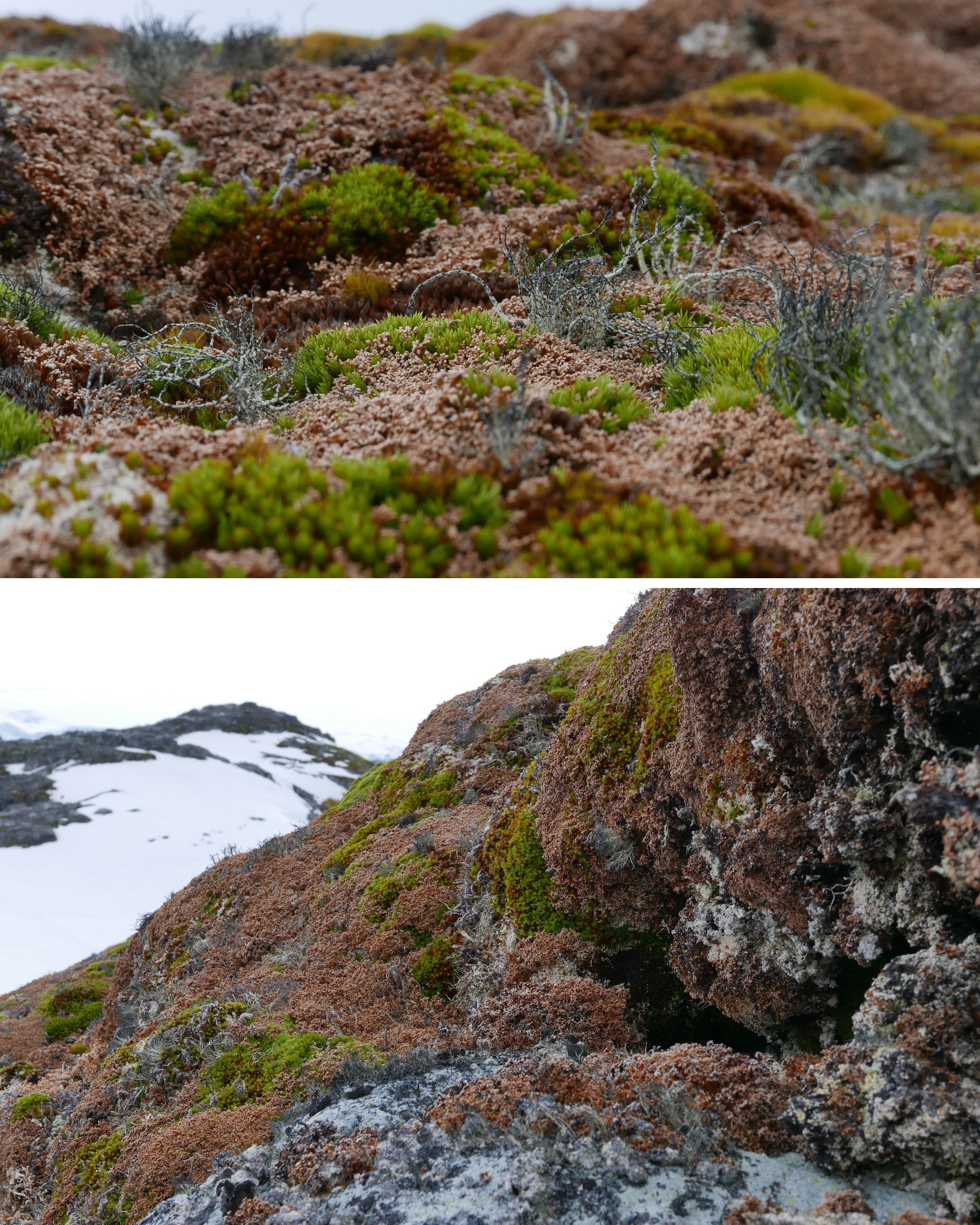Antarctic lichens - part I:
A lichen is comprised of a community of microbes helping each other out - this process of working together is called symbiosis. Lichens are comprised of fungi and photosynthetic partners, such as cyanobacteria or algae. The photosynthesizing partner can provide the fungus with energy obtained through photosynthesis and, in turn, the fungus can provide its partner with nutrients mined from the substrate (e.g. rocks). Lichens can grow directly on rock, moss and other surfaces. Lichens are found worldwide, including in Antarctica.
Lichens can have different growth forms, mostly determined by the fungal partner. Most notably in Antarctica are the following growth forms:
- fruticose (which have a branching pattern, such as Usnea antarctica (see grey/light-green branchy lichen in the photo at the end of this blog).
- foliose (leaf-like; top right photo).
- crustose (which form a thin crust; bottom left photo).
We even found a lichen that resembled the Antarctic continent (bottom right)!

The moss-lichen communities are particularly striking at Litchfield Island. Lichens and moss grow intertwined, creating a rich carpet of moss-lichen communities. In the foreground of the photo below you can see the rock that is below this incredible carpet! Clearly, life is thriving here, even on bare rock!
